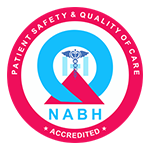Imagine this: a baby is born, tiny fingers, adorable cheeks, cute button nose… and then the doctor looks at the ultrasound and goes, “Hmm, there are cysts on both kidneys.” Wait, what? Babies are supposed to come with milk teeth, giggles, and chubby thighs, not cysts! But yes, it can happen. Some babies are indeed born with cysts in both kidneys.
Before you panic (or Google like a maniac at 2 AM), let’s take a deep breath and talk about this calmly. While the thought of kidney cysts in infants, children & teens sounds terrifying, modern medicine and even ancient Ayurveda have a lot to say (and do) about it.
So, grab a cup of tea, or if you’re a new parent, probably that cold cup of coffee you brewed three hours ago, and let’s dive in.
The medical term for this is “polycystic kidney disease (PKD)” or sometimes just “renal cystic disease.” It’s not super common, but it happens. There are two main types:
Now, don’t go blaming yourself or your pregnancy cravings. Kidney cysts in babies are usually genetic or developmental.
And no, eating extra ice cream during pregnancy doesn’t cause it (thank goodness).
Fetal kidney cysts are quite rare, seen in only a small percentage of pregnancies. They are often diagnosed during routine ultrasound.
Most of the time, cysts are detected even before birth through prenatal ultrasounds. Doctors might notice:
The good news? Not all cysts cause serious problems. Some are tiny and don’t affect kidney function much at all.
Depending on how serious the cysts are, symptoms can range from barely noticeable to more concerning:
But here’s the thing: many babies with mild cysts grow up normally and may never have serious kidney issues.
Polycystic Kidney Disease (PKD) is a genetic condition where cysts develop in both kidneys over time, potentially leading to kidney failure. Multicystic Dysplastic Kidney (MCDK), on the other hand, is a birth defect where one kidney gets affected due to the formation of cysts.
Okay, let’s get to the big question: What can be done?
If you believe in the benefits of natural healing (and Ayurveda has been around for over 5000 years, it must be doing something correctly), here is what Ayurveda encompasses:
Important note: Ayurvedic interventions should only be performed under the supervision of a qualified Ayurvedic doctor, particularly with babies.
Yes, some fetal kidney cysts can shrink or disappear on their own as the baby grows.
Babies with unilateral MCDK often have a normal life expectancy if the other kidney is healthy and has normal functioning.
Here’s the silver lining: many babies with small cysts live normal lives. The kidney is a strong little warrior, and if one kidney takes the day off, the other often works overtime to compensate.
For babies with severe PKD, ongoing care is needed, but with medical advancements and proper lifestyle management, many children grow up to lead healthy, happy lives.
And hey, let’s not forget, babies are tougher than we think. They learn to crawl, walk, and scream their lungs out at 3 AM; tiny cysts don’t stand a chance against that level of determination!
Yes, babies can be born with cysts on both kidneys, but that doesn’t mean their life story is written in kidney-shaped gloom. Medical science, Ayurveda, and your baby’s own resilience can do wonders.
Ans.
They are usually caused by genetic conditions like polycystic kidney disease or developmental issues in the kidneys.
Ans.
Through prenatal or postnatal ultrasound, sometimes confirmed with MRI or genetic testing.
Ans.
Some simple cysts may shrink or disappear, but genetic or complex cysts usually persist.
Ans.
Treatment depends on severity; monitoring, medications for symptoms, or surgery in severe cases.
Ans.
Mild cases do well; genetic or severe cystic diseases may lead to kidney problems later in life.

Certificate no- AH-2023-0186
JAN 05,2023-JAN 04,2026
"Ayurveda is not just a system of medicine; it's a way of life. Connect with us to embrace a lifestyle that nurtures your body, mind, and soul."
Book Consultation Now